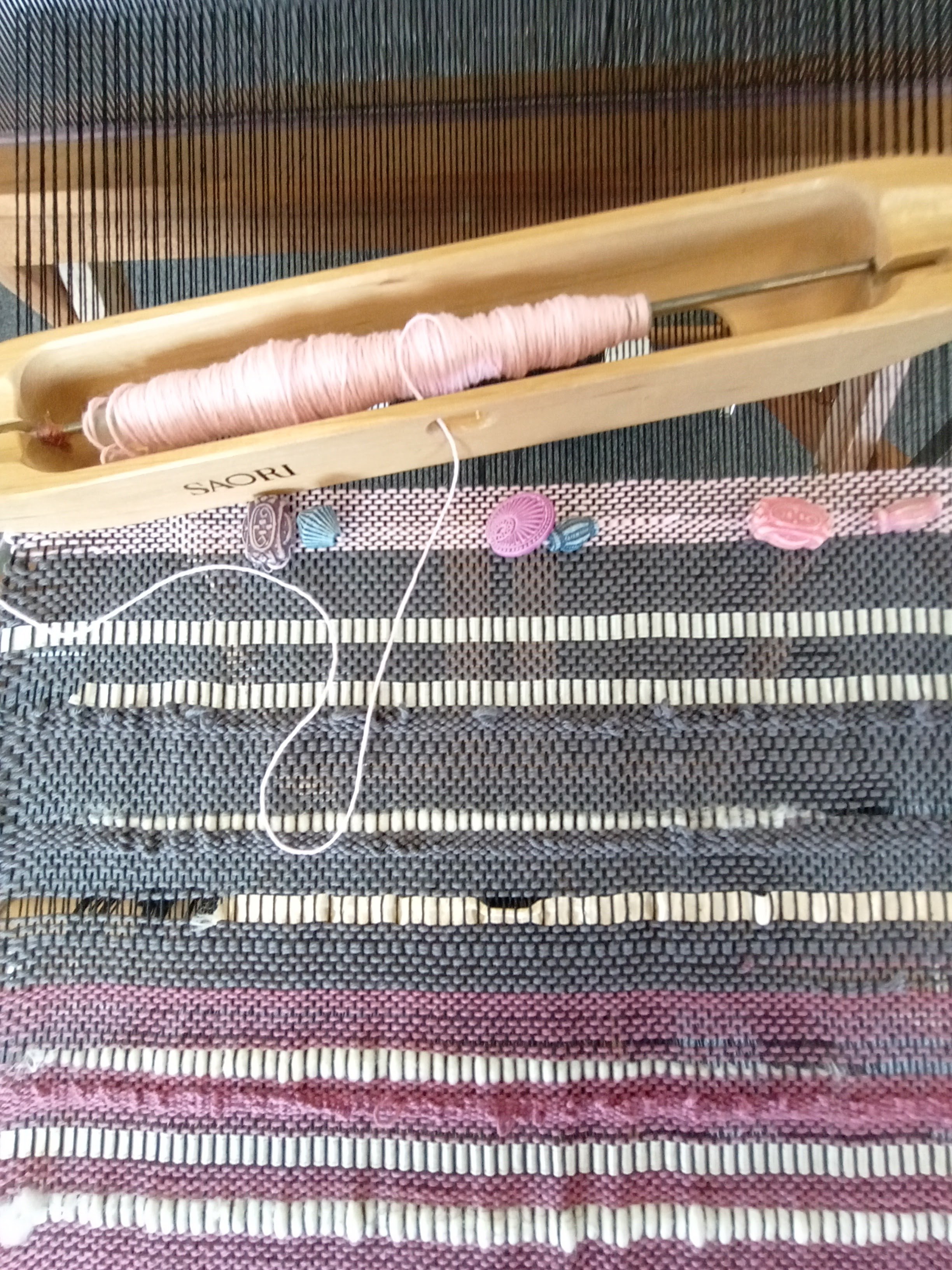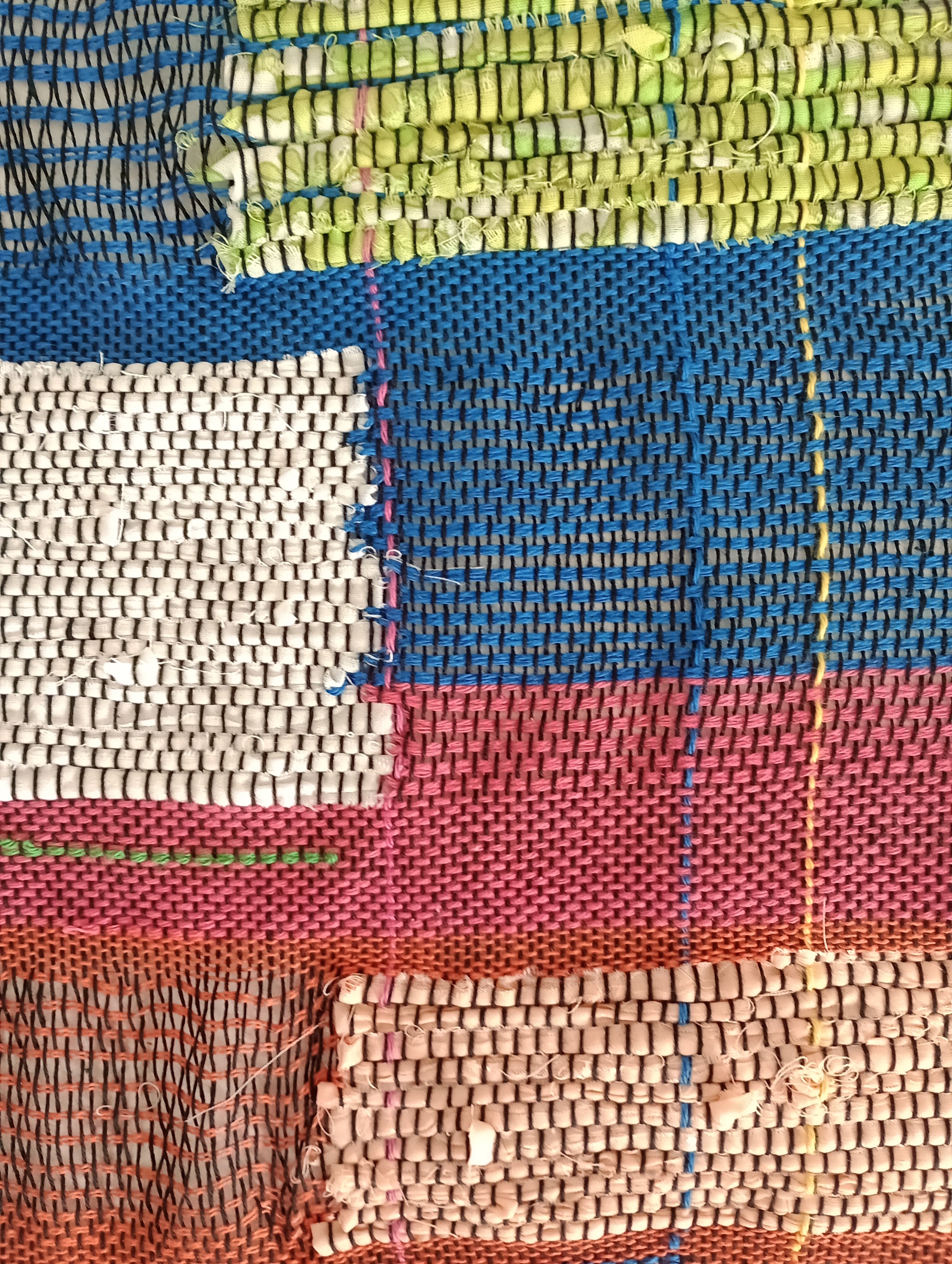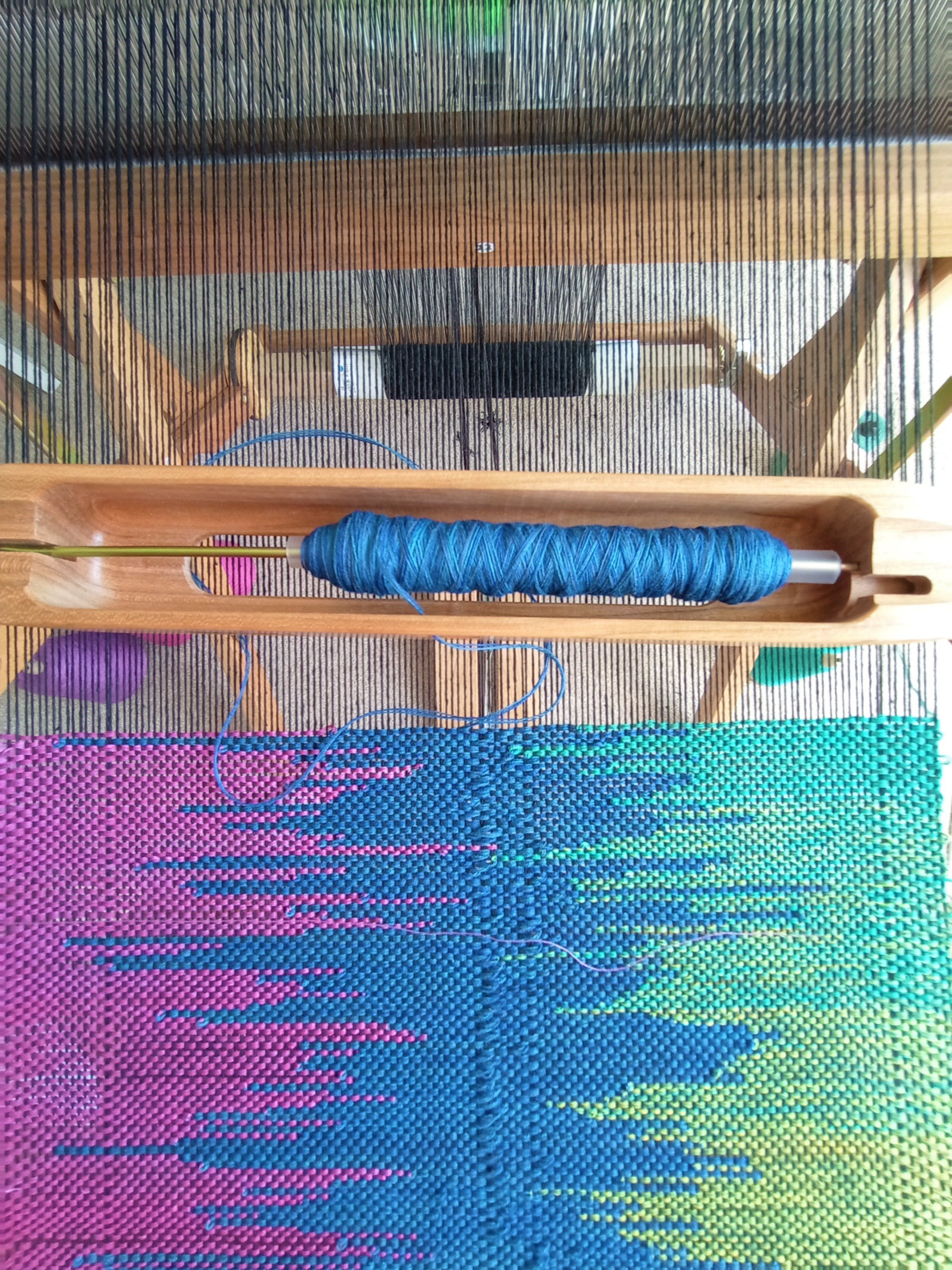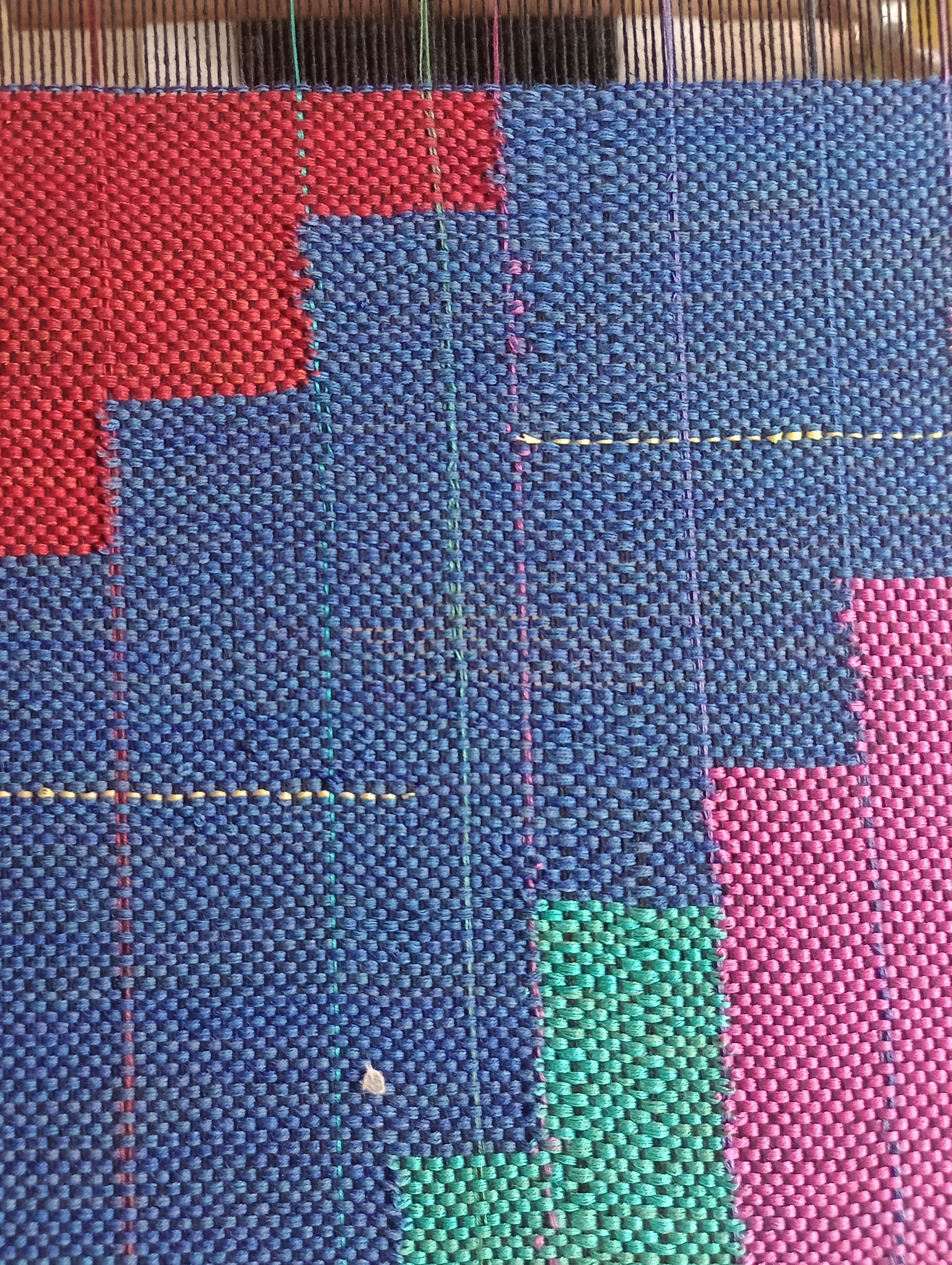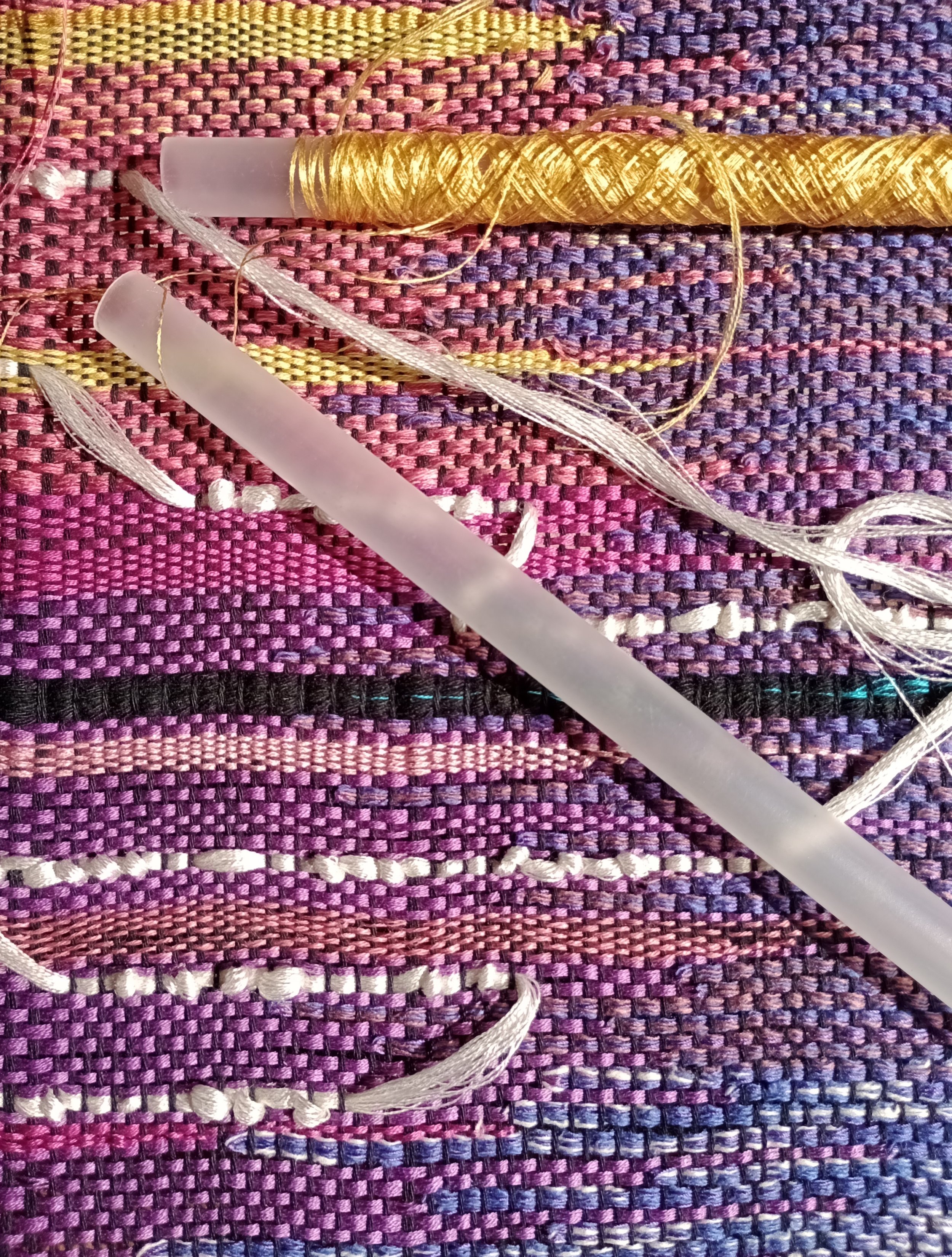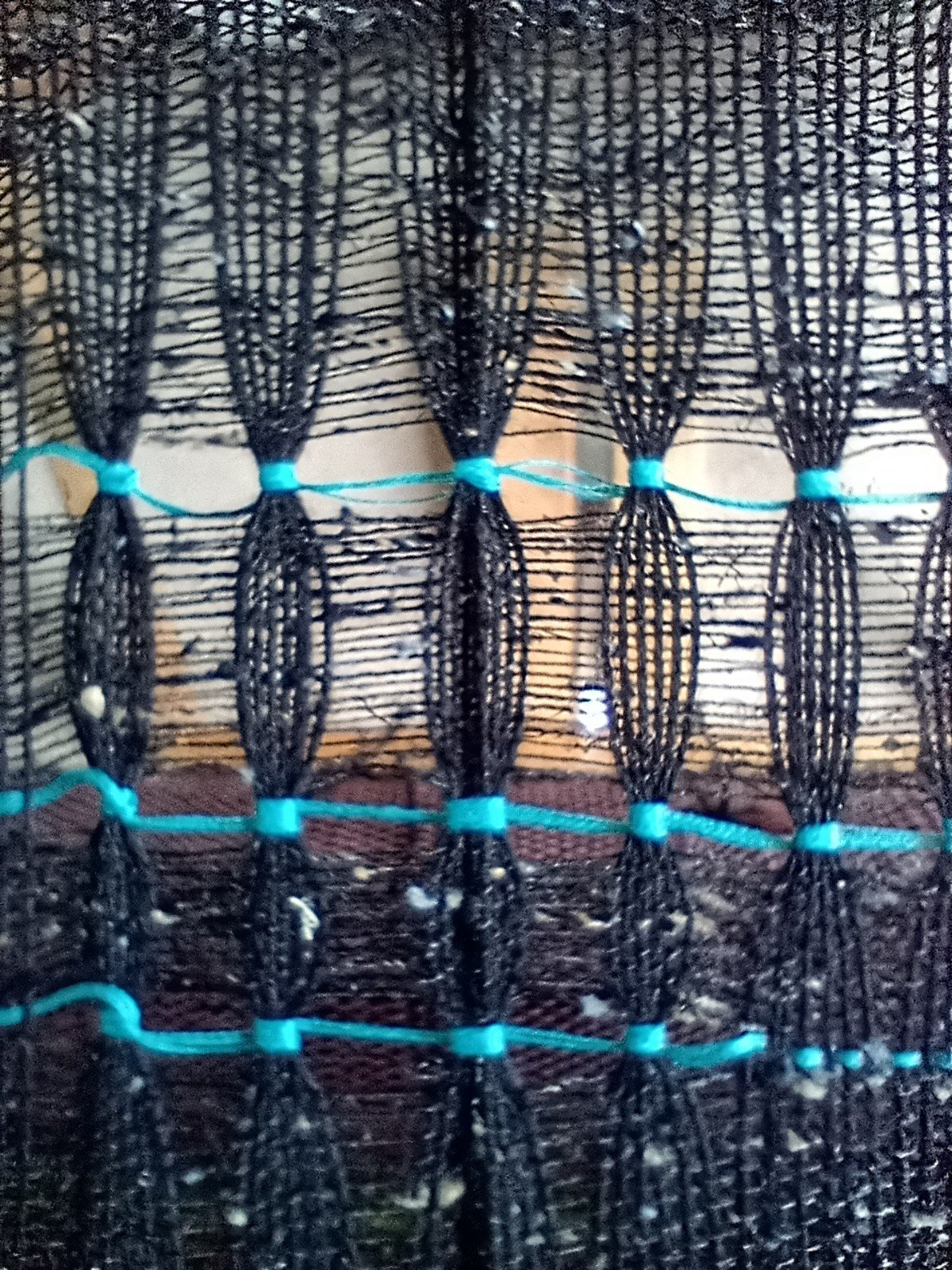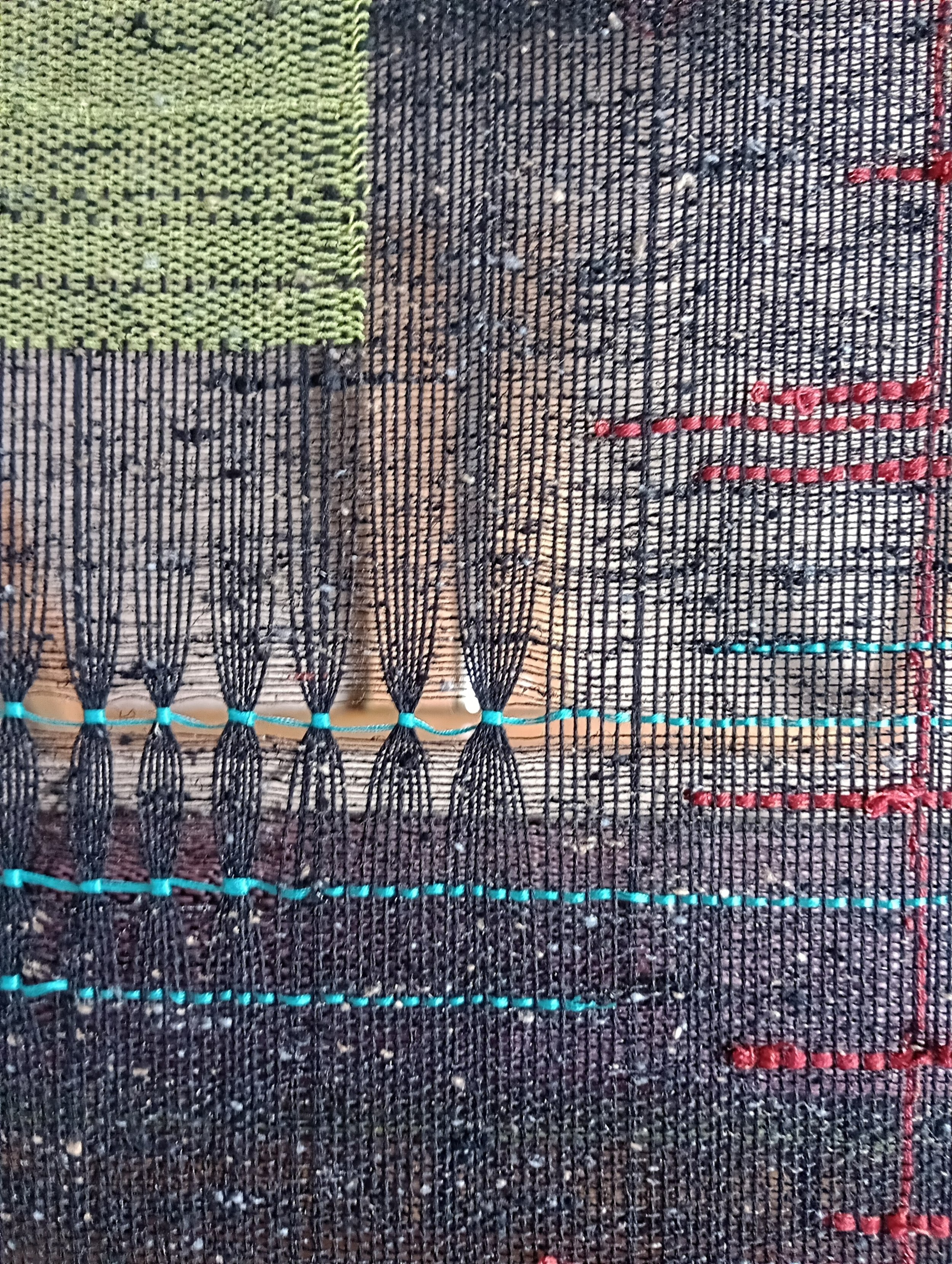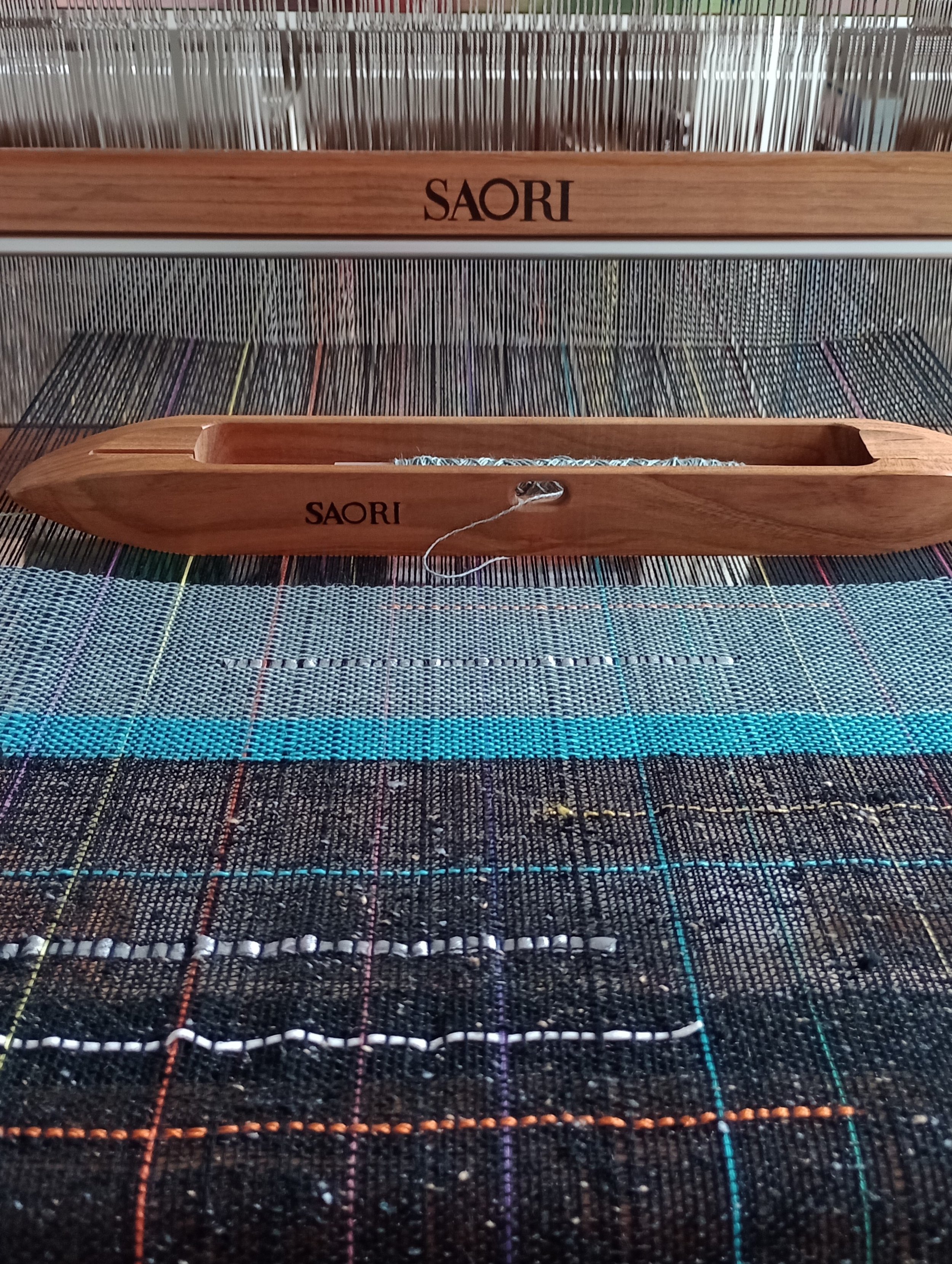It seems almost unbelievable that the year of my Intuitive Threads project, funded by a Developing Your Creative Practice grant from Arts Council England, is coming to an end. This time last year I was overwhelmed to find out that my application had been successful. Although this project will officially end in January, I feel like I’m only really getting started with ideas I want to develop in my creative practice and with further research and investigation into ideas around the role of intuition in creativity.
I have to submit an evaluation on the project by the end of January. I started by going through my original budget and comparing it to my actual spending! Well it was a good way to start on the process of reflecting on what I’ve achieved, if I've met my original aims and where I want to go next. Perhaps it being the end of the year and the start of a new one is a good time for this kind of reflection anyway. When I thought about bringing this project to a close, the phrase ‘tying up loose ends’ came to me. This feels appropriate as it seems like it should be a weaving metaphor. I suppose I could also go with ‘tying up loose threads’.
One of those loose ends/threads was wanting to return to and explore in more depth the ideas presented in the article ‘Understanding Creative Intuition’, by Dr Theresa Hardman. I am really grateful to Ruth Leary, Associate Professor at the Centre for Cultural and Media Policy Studies, University of Warwick for sending it to me. It's been the most relevant and concise take on creative intuition that I’ve read so far. Having said that, it's taken me a few readings to fully digest and process and I'm sure there's more layers still to unfold in my understanding. I've attempted here to lay out the main points and ideas I’ve taken from it.
The article starts by saying it draws on psychology and Eastern and Western philosophy and that intuition is not well understood. Four interrelated principles of creative intuition are presented. These are;
It involves a state of expanded consciousness
It is an open, fluid way of being
It focuses on the particular, rather than the general
It is an act of fusion or identification which occurs through emotion or empathy
The creative process is described as having two parts; conscious intellectual thinking and a less conscious intuitive knowing and discovering process. It describes the experience of creative intuition as fragile and fleeting but also holding potential to generate new and original thoughts and actions. This process or experience can also be characterised as mysterious.
In part 2. The author asks, ‘What is creative intuition?’ and discusses definitions of intuition. Quoting Jung, intuition is described as a function of being human. This stands out to me because it is in alignment with the first slogan from SAORI ‘Consider the difference between a machine and a human being.’
“Jung defines intuition as a function of being human, like thinking, feeling and sensation.” (p.2)
Intuition is an unconscious or broader ‘supra-conscious’ process that involves emotion, is anticipatory and is the ability to know or understand something without knowing how you know it.
Eastern philosophies offer a spiritual perspective. A Taoist understanding is intuition (chih) is “a private awareness of one's innermost being” (Chang, 1975).” A Zen view of intuition is that it is an enlightenment experience and direct knowing cultivated through paying attention or ‘mindfulness’. Interestingly I previously came across the idea of ‘mushin’ meaning ‘no mind’ from Zen tradition which could equate to ‘mindfulness’. In the article, Theresa says the source of authentic creativity arises from inner personal experience. Giving rise to highly personal responses to the world.
Part 3, ‘It involves an expanded state of consciousness’, discusses how intuition involves an expanded state of consciousness. It says that there is a close connection or co-existence between unconscious forms of consciousness and creative intuition and that therefore this relationship must be explored. Looking at Jung’s theories, ‘Ego’ is explained as a distinct sense of personal identity related to consciousness. In essence our Ego identity is our conscious self although there are aspects of the Ego that are hidden to the conscious self. Through consciousness we reflect on our experience of the outer world to create our inner world. Our inner consciousness affects how we interpret meaning from the external world.
“Consciousness can therefore be regarded as a dialogue between our inner world and the outer world of external reality in that inner streams of consciousness affect the way we make meaning out of the external world.” (p.3)
Jung also presented the concept of ‘the collective unconscious’, a group unconscious existing beyond the individual. This is mentioned as an experience of non-duality. The concept of non-duality appears to be important to intuition as I’ve come across it in other books and articles. Non-duality appears to be about the blurring of boundaries between subject and object. This is therefore an expanded consciousness. I wondered if the unconscious self could be equated to the idea of the ‘True-self’ that is found and expressed in SAORI weaving.
Part 3.1 of the article is titled, ‘Ways of knowing reality - the intellect and intuition’. This presents the idea of ‘Flux’ being the stream of life we interact with. The future is always in a state of becoming therefore is open ended and unpredictable. We can either interact with life (reality) through the intellect, i.e. mental, logical processing or through intuition which involves nonlinear knowing or perceiving. Intuition experiences both internal and external realities drawing on all consciousness including the unconscious. Intuition waits for meaning to emerge and makes new thinking possible. But this is not the ‘normal’ way of being in the world.
“Because intuition is the most direct way of knowing reality, the movement of consciousness is always from intuition to intellect; it is impossible for the mind to move from intellect to intuition. So, true creativity starts with intuition and is followed by intellectual thought processes, never the other way around.” (p.3)
To engage with the creative process through intuition, which is an unpredictable, open way with fluid reality, an ‘expanded’ state of consciousness is necessary. This includes memory, sensation, thoughts, emotions and intuition. This made me think of the SAORI Slogan of ‘Look out through eyes that shine’, to me this is about broadening awareness of what is around us in order to find inspiration.
Intuition in the creative process is described as an almost mystical experience using all aspects of human consciousness to achieve insight beyond the solely rational.
“This almost mystical state of expanded consciousness involves the totality of being human, with the conscious and the embodied unconscious acting in unity. It is therefore not irrational, but rather super-rational; more than the rational mind can achieve by itself, with the bodily experience, the intellect, intuition and the emotions all working together to access fleeting glimpses of a fluid reality.” (p. 3-4)
The aspect of this being a uniquely human process is referred to. The article talks about intuition requiring a passive or receptive way of being which waits for meaning and patterns to emerge rather than imposing them. Also that the key to interaction between the conscious and subconscious mind requires relaxing the boundaries with ego consciousness and to be available to whatever presents itself. To me this has similarities to the SAORI process of expressive weaving without rigid pre-planning.
In part 4., ‘It requires an open fluid way of being’, Teresa Hardman talks about a characteristic of intuitive processing being a tolerance for ambiguity and uncertainty. This is different to the normal way of being as it requires presence moment to moment. It also requires the releasing of preconceived ‘safe’ ways of thinking and acting. All possibilities must be allowable.
“As intuition becomes a way of knowing, you are able to tolerate ambiguity and uncertainty. In this way the unpredictable becomes possible, as there is no mental ‘clinging’ to safe, preconceived or predictable ways of thinking and doing.” (p.4)
She also examines Taoism and Zen Buddhism approaches to a way of being without inhibition and restriction of ego. They regard ego as a mental construct and see the world as being made up of organic spontaneous processes.
“These ways of being are open and fluid, with no concern for outcome or ‘correctness’”. (p. 4)
This fluid approach to reality allows for ‘anarchic’ ways of thinking that lead to creative breakthroughs. This again brought me back to the SAORI approach of the importance of cultivating ‘unconventional thinking’. The traditional Japanese approach to craft is something I would like to explore further as I feel there is a significant link here too.
“Through this dynamic process, a personal, vivid and energetic response to the world is revealed”. (p. 4)
Part 5., ‘It requires focus on the particular’, proposes that intuition needs to be focused on something based in reality. Although openness and relinquishing control of outcomes is required, attention needs to be paid to the particular, to something ‘specific and real’. We come to know reality more fully through focus on what is in front and around us. Therefore we make creative connections and new ideas and creativity becomes original and not derivative.
Part 6. of the article ‘It is an experience of fusion through emotion’ sets out the role of emotion in creative intuition. Looking at the relationship we have with things as being multidimensional and reciprocal. This results in there being ‘no real boundaries between objects and states’ (p5). Through an emotional connection with the object of focus, boundaries between self and object become blurred or merged.
Making a link again with SAORI, this reminds me of the idea that part of the self is woven into the cloth. Kansei being an individual’s intuitive sense of beauty.
“In their SAORI work, the weavers’ personal histories are woven and their individualities…emerge along with their capabilities and kansei…” (p.140 SAORI Self-Innovation Through Free Weaving - Misao Jo & Kenzo Jo)
“We do not weave a piece of cloth, but rather our true selves.” (p.6. SAORI Self-Innovation Through Free Weaving)
The empathy/emotion characterising the intuitive experience breaks down barriers with external reality. This sympathy or fusion with external circumstances is fleeting and fragmentary and needs to be recorded/captured as soon as possible. Intuitive knowing is holistic (expansive?) and exists outside of time and context.
“Intellectual knowing is linear, successive and categorical, while intuitive knowing is holistic, atemporal and acontextual.” (p. 5)
I found another article by Theresa Hardman on her website - Understanding Creative Intuition (2017). In the section titled ‘Creative intuition relies on emotion’ I found more information on the connection with emotion. Something that’s come up for me throughout this project is how does the idea of artistic/creative self-expression relate to intuition. Somehow I was getting them muddled. It felt like they were both important and yet also separate and not the same thing. In this article I found a clearer concept of this. In some way expressing emotions is equal to self-expression and intuition can be considered ‘emotional knowledge’.
“Most theories of intuition note the importance of emotion as an aspect of intuition, and Hague makes the point that 'the relationship between creative intuition and emotion is one of the most important elements of the creative process' (2003:75). What is common to all the theories and philosophies of intuition is that emotion enables communication with the unconscious regions of the mind, and this in turn allows intuition to emerge in rational consciousness. Wild refers to intuition as a kind of 'emotional knowledge' (1938:181) …”
“During the creative act, emotion precedes the intellect and is always ahead of the logical structuring or implementation of any work of art (Bergson 1932:47). It is therefore at the root of all creative activity.” (p.10, Understanding Creative Intuition (2017).)
Expressing emotions is not distinct or separate then from creative intuition but a significant part of the process. It exists at the beginning of the creative process to be acted on. It’s transformed through a practical/logical/intellectual process into a tangible creation. The internal intangible emotional charge of intuition is expressed in the physical creation.
I’m really grateful for Theresa Hardman’s work on this subject. Although it’s taken me a lot to process and make personal sense of all the information contained in her articles. I may still need a bit more processing time! I think there is potential to make a lot more links between the theories of creative intuition she lays out and the ethos and principles of SAORI weaving.
For me, in my own creative process, a distinction is emerging between two different ways intuition can show up. Firstly intuition as an unexpected, sudden, momentary, fleeting insight of inspiration or knowing that can then be logically and rationally directed into new works and ideas. Secondly a making/working process that is based on intuitive qualities of mindfulness and focus, fluid, experimental and instinctual with an emotional connection channelled into the work.
Other themes have come up for me throughout this research and the project as a whole. A significant theme is the distinction between and the interaction of both intellect and intuition in the creative process. This dynamic could also be separated into the idea of left brain, logical, rational, practical, within limitations, masculine energy and right brain, beyond rational, non-linear, intangible/ephemeral, unrestricted, feminine energy. You could add to that the idea of the innately human experience versus the mechanical. There are some other ideas and concepts that I’ve come across that I’d like to explore in more depth and many books and articles that I haven’t finished reading yet. So hopefully I will be able to continue to look into these ideas and take them forward into new work in the future.
References
Understanding Creative Intuition, Theresa Jane Hardman - Journal of Creativity 2021
Understanding Creative Intuition (2017) Theresa Hardman
Leela-flow Theresa Hardman website
CREATiVE CONVERSATiONS with Leda van der Post | introducing Dr Theresa Hardman YouTube
The Creative Life | Theresa Hardman YouTube
SAORI Self-Innovation Through Free Weaving - book by Misao Jo & Kenzo Jo
What is SAORI? SAORI Global website
Mushin (mental state) - Wikipedia
The Ethos of SAORI weaving - blog post - www.amiewiberley.co.uk
Themes of Notes from SAORI book.pdf - personal notes
Intuitive Threads is a personal research and development project by textile artist Amie Wiberley, Supported using public funding by Arts Council England.
If you would like to keep up to date with my progress throughout this project, please follow me on my blog and Social Media; Instagram @ameswibs, Twitter/X @amiwib, Facebook Amie Wiberley Textile Artist
Amie is a textile artist and holistic and creativity coach. Find out more at www.amiewiberley.co.uk. Sign up to the mailing list here.
